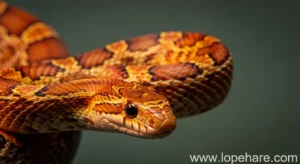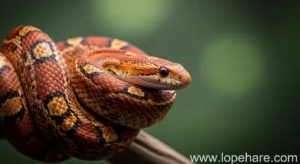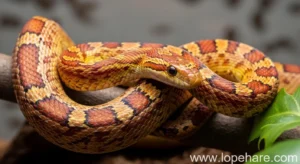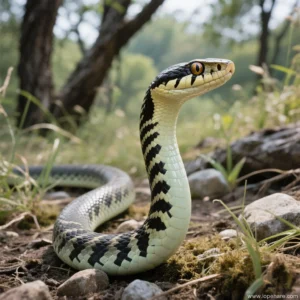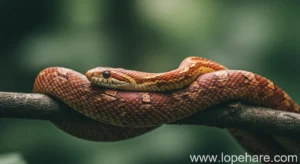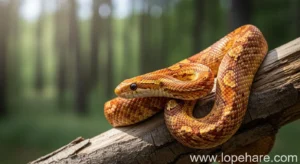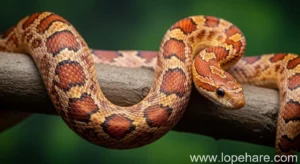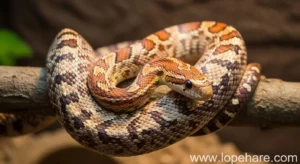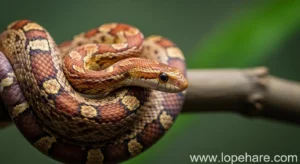Reptile Husbandry
How to Recognize Signs of Stress in Your Corn Snake
At lopehare, we understand the unique bond owners share with their niche pets, including the fascinating world of reptiles. Corn snakes, known for their docile nature and striking patterns, are popular pets, but just like any animal, they can experience stress. As dedicated keepers, recognizing the signs of stress in your corn snake is crucial for their well-being. A stressed snake is often a snake whose environment or care isn’t quite right, and prolonged stress can lead to serious health issues. Let’s delve into what stress looks like in these animals and how to keep your cornsnake happy and healthy.
Understanding Stress in Corn Snakes
Stress in snakes isn’t just an emotional state; it’s a physiological response that impacts their overall health and immune system. When a corn snake feels threatened or uncomfortable in its environment, its body releases stress hormones, which can suppress the immune system, making them more susceptible to illness. Understanding the subtle cues your snake gives you is key to proactive care, a cornerstone of our philosophy at lopehare.
Behavioral Changes
One of the most noticeable ways how to tell if your pet corn snake is stressed is through changes in their normal behavior. Corn snakes are naturally curious and can be active, especially in the evenings. However, significant shifts can indicate problems.
- Excessive Hiding: While snakes need hiding spots, a snake that spends 100% of its time hidden, refusing to explore even when it’s dark, might be stressed or insecure.
- Constant Pacing/Attempting to Escape: A snake constantly pushing against the enclosure walls or lid, desperately seeking a way out, is a clear sign that something is wrong with its environment. This is particularly concerning if it’s persistent.
- Increased Aggression or Defensiveness: Normally docile corn snakes that suddenly become jumpy, hiss, or strike when you approach or try to handle them are likely stressed. This isn’t typical for a secure, comfortable corn snake.
- Abnormal Activity Patterns: Being unusually active during the day (unless it’s a specific temporary behavior like shedding) or completely inactive at all times can be stress indicators.
Changes in Appetite and Feeding
Stress significantly impacts a snake’s metabolism and desire to eat.
- Refusing Food: Skipping meals occasionally isn’t always a red flag, but a consistent refusal of appropriately sized food items over multiple feeding opportunities is a strong indicator of stress or underlying health issues.
- Regurgitation: Regurgitating a meal is a serious sign of stress, illness, or improper husbandry (like handling too soon after eating, or temperatures being too low). A snake that regurgitates is highly stressed and needs immediate attention to identify the cause.
Physical Manifestations of Stress
Stress can sometimes manifest physically, although these signs often overlap with other health problems, requiring careful observation.
- Weight Loss: Consistent food refusal and the physiological toll of stress can lead to noticeable weight loss.
- Dull or Wrinkled Skin (outside of shedding): While wrinkled skin is normal just before shedding, persistent dull, dry, or wrinkled skin might suggest chronic dehydration, often linked to improper humidity, a significant stressor.
- Open Mouth Breathing or Wheezing: This is a sign of a potential respiratory infection, which can be triggered by stress-compromised immunity or improper environmental conditions (like low temperatures or stagnant air).
Monitoring your snake’s body condition and appearance regularly is part of the diligent snake pet care we advocate for here at lopehare.
Enclosure Use and Hiding Patterns
How your corn snake utilizes its enclosure provides critical clues about its comfort level.
- Always in the Water Dish: Unless it’s shedding soon, a snake spending excessive time soaking in its water dish might be trying to cool down (if the enclosure is too hot) or seeking relief from mites. Both situations are highly stressful.
- Only Hiding in One Spot: If your snake only uses one hide and ignores others, or never explores its enclosure, it suggests it doesn’t feel secure enough to venture out. Providing multiple varied hiding spots (one on the cool side, one on the warm side) is essential.
- Rubbing Nose Raw: Snakes that constantly try to escape by rubbing their noses against the lid or sides can cause abrasions. This is a clear sign of environmental stress, usually related to inadequate space, lack of hides, or improper temperatures.
Check Your Setup First: If you observe these signs, the first thing to examine is your enclosure setup. Are temperatures correct? Is humidity appropriate? Are there enough hiding places? Is the enclosure large enough? Many stress signs are directly linked to husbandry errors.
Shedding Problems
A healthy corn snake should shed its skin in one complete piece, including the eye caps. Difficulties with shedding (dysecdysis) are often linked to stress, improper humidity, or underlying health issues.
- Incomplete Sheds: Retained patches of skin or eye caps are a common sign that the snake is stressed or its environment wasn’t humid enough during the shedding process.
- Frequent or Infrequent Sheds: While shedding frequency varies with age and growth rate, unusually frequent or infrequent sheds can sometimes indicate metabolic issues potentially exacerbated by chronic stress.
Common Causes of Stress
Understanding the common causes of stress in captive corn snakes helps you prevent them:
- Improper Temperatures or Humidity: Too hot, too cold, too dry, or too humid conditions are primary stressors.
- Lack of Hiding Spots: Snakes are prey animals; they need secure places to retreat.
- Too Small Enclosure: Insufficient space prevents natural behavior and exploration.
- Over-handling: While some corn snakes tolerate handling, excessive or rough handling is stressful.
- Lack of Ventilation: Stagnant air can lead to respiratory issues and discomfort.
- Incorrect Substrate: Dusty or inappropriate substrates can cause respiratory or skin irritation.
- Cohabitation: Housing corn snakes together is highly stressful and should be avoided. They are solitary animals.
- Loud Noises or Constant Activity: Placing the enclosure in a high-traffic, noisy area.
- Inappropriate Lighting: Lack of a day/night cycle or constant bright light.
- Poor Hygiene: A dirty enclosure is a breeding ground for bacteria and parasites, leading to stress and illness.
- Mites or Other Parasites: These cause intense discomfort and stress.
Environment is Key: The single biggest factor in preventing stress for most captive reptiles, including corn snakes, is providing a properly sized enclosure with appropriate temperature gradients, humidity, ventilation, and plenty of secure hides.
Here is an image of a beautiful corn snake in a naturalistic setting, showcasing the kind of environment that helps reduce stress:

Preventing and Managing Stress
Prevention is always better than cure. Follow these guidelines:
- Research Thoroughly: Understand the specific needs of your corn snake species (e.g., *Pantherophis guttatus*) before bringing it home.
- Provide Proper Enclosure: Ensure the size is adequate, with a secure lid, temperature gradient (using a heat mat or ceramic heat emitter with a thermostat), appropriate humidity (monitored with a hygrometer), and multiple hiding spots.
- Use Appropriate Substrate: Cypress mulch, aspen bedding (avoid for high humidity species), or paper towels are common safe options.
- Handle with Care: Handle gently and only when necessary, avoiding handling right after feeding or during shedding. Learn to read your snake’s body language.
- Maintain Hygiene: Spot clean daily/weekly and perform full substrate changes periodically.
- Provide a Day/Night Cycle: Use appropriate lighting (not necessarily UVB for corn snakes unless specifically recommended by a vet for a health issue) on a timer.
- Minimize Disturbances: Place the enclosure in a quiet area away from direct sunlight, drafts, and constant loud noises.
Another view of a stunning corn snake:
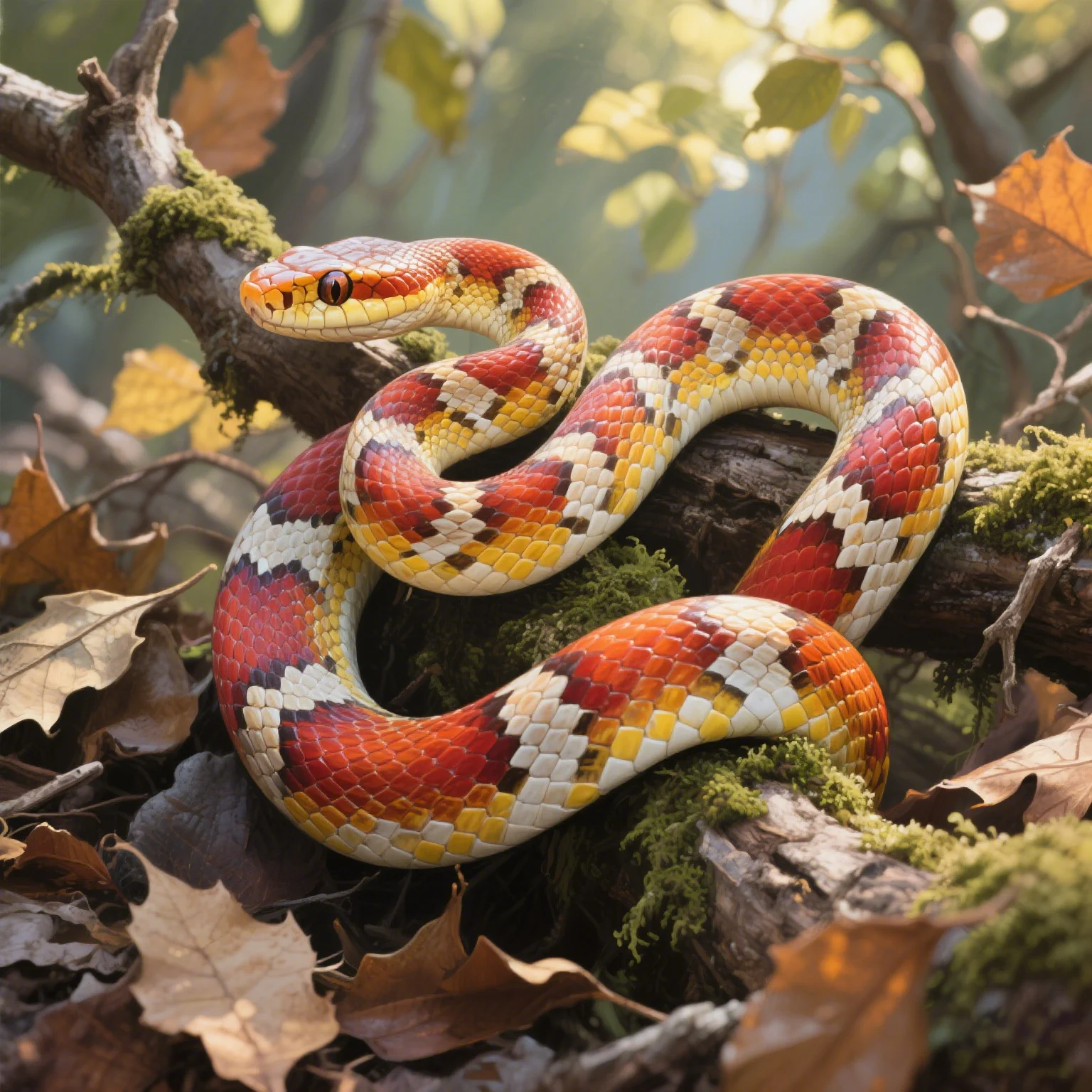
When to Seek Veterinary Help
If you notice persistent signs of stress, especially combined with physical symptoms like weight loss, regurgitation, or labored breathing, it’s time to consult a veterinarian experienced with reptiles. Early intervention is crucial.
Conclusion: A Happy, Healthy Snake
Recognizing and addressing stress is a fundamental part of responsible corn snake ownership. By providing a stable, secure environment and paying close attention to their behavior, you can significantly reduce stress and ensure your corn snake thrives. At lopehare, we’re passionate about empowering you with the knowledge to give your unique pets the best possible care. A well-cared-for corn snake is a fascinating and rewarding companion for many years.
References:
- Corn snake – Wikipedia
- Additional information based on general reptile husbandry knowledge and common practices in herpetoculture.
